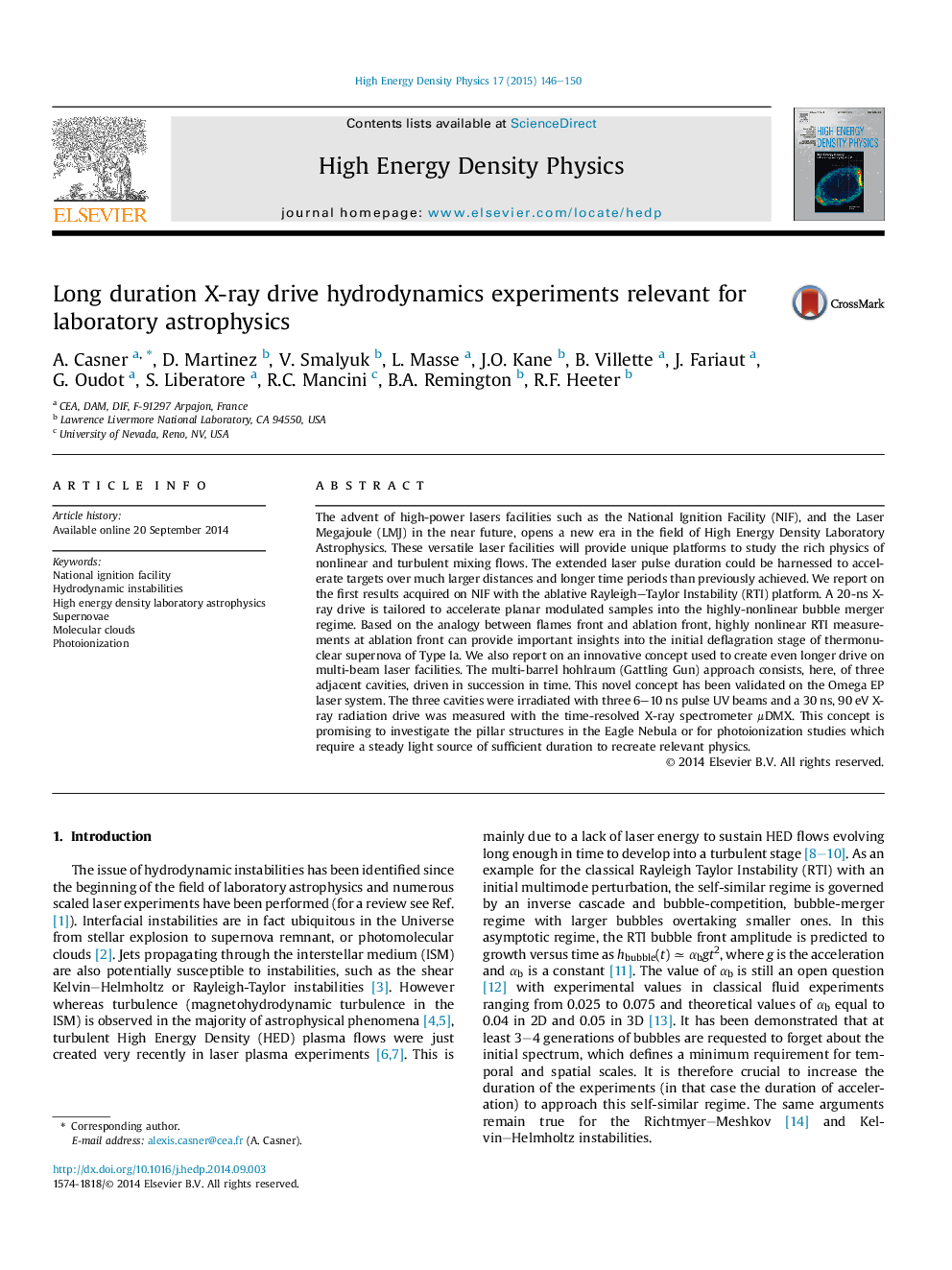| Article ID | Journal | Published Year | Pages | File Type |
|---|---|---|---|---|
| 1772327 | High Energy Density Physics | 2015 | 5 Pages |
The advent of high-power lasers facilities such as the National Ignition Facility (NIF), and the Laser Megajoule (LMJ) in the near future, opens a new era in the field of High Energy Density Laboratory Astrophysics. These versatile laser facilities will provide unique platforms to study the rich physics of nonlinear and turbulent mixing flows. The extended laser pulse duration could be harnessed to accelerate targets over much larger distances and longer time periods than previously achieved. We report on the first results acquired on NIF with the ablative Rayleigh–Taylor Instability (RTI) platform. A 20-ns X-ray drive is tailored to accelerate planar modulated samples into the highly-nonlinear bubble merger regime. Based on the analogy between flames front and ablation front, highly nonlinear RTI measurements at ablation front can provide important insights into the initial deflagration stage of thermonuclear supernova of Type Ia. We also report on an innovative concept used to create even longer drive on multi-beam laser facilities. The multi-barrel hohlraum (Gattling Gun) approach consists, here, of three adjacent cavities, driven in succession in time. This novel concept has been validated on the Omega EP laser system. The three cavities were irradiated with three 6–10 ns pulse UV beams and a 30 ns, 90 eV X-ray radiation drive was measured with the time-resolved X-ray spectrometer μDMX. This concept is promising to investigate the pillar structures in the Eagle Nebula or for photoionization studies which require a steady light source of sufficient duration to recreate relevant physics.
